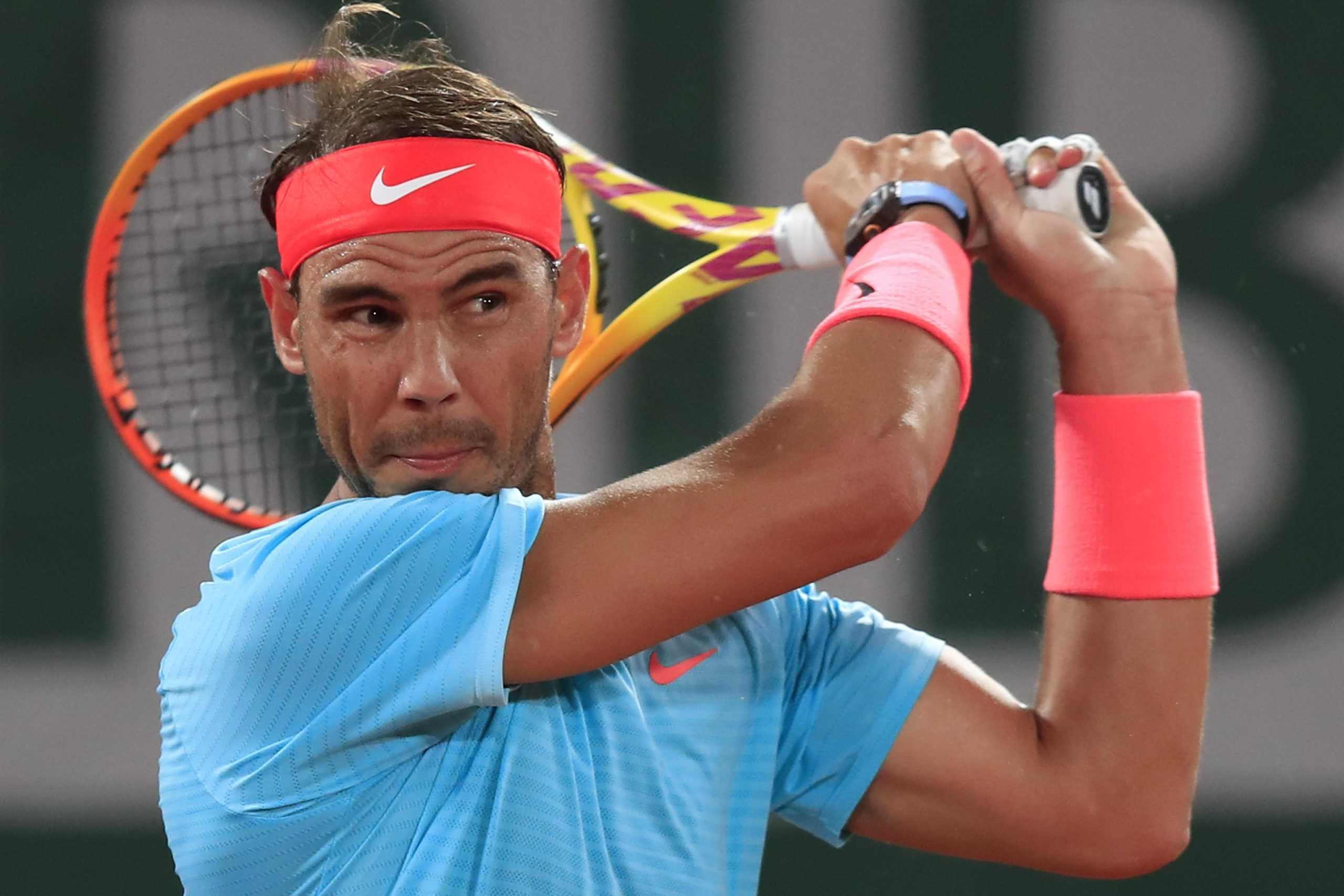It’s cold. It’s autumn. Change is in the air. Roland Garros seems to be pointing a clay-covered finger at Rafael Nadal as if to say: Are you game for this? And as a player who likes his routines and accoutrements to be “just right,” Nadal faces a messy test of upheaval in this 2020 pandemic year.
The deviations from the norm have included:
- Colder temperatures
- Wetter air
- A new ball
Do these variables make a difference when it comes to the King of Clay?
How Nadal fares in this different atmosphere has been the topic of endless discussion— both from those who think the 12-time French Open champion can repeat— to those who think beleguered-yet-bulldogged Novak Djokovic is the natural choice.
For possible answers to how Rafa will deal with these conditions, we look at historical data. On clay, how has Nadal fared in a range of circumstances? And maybe a more intriguing question: Is there a set of conditions in which he performs most optimally?
The following is a collaboration with Shane Liyange of Data Driven Sports Analytics, a firm which advises multiple players in this year’s Roland Garros field. Liyange says it’s likely Nadal and his coach Carlos Moya, who embraces data, have taken everything into account.
“No doubt Carlos Moya and Rafael Nadal have made the necessary tactical adjustments, including keeping Rafa closer to the baseline and using more slices, as well as equipment adjustments like easing up the string tension on his racquet,” Liyange said.
Below is a look at Nadal’s work on clay in various conditions since 2005, presented in 3 data visualizations.
Temperature
Paris enjoys an average temperature of 17 degrees Celsius (63 degrees F) during its usual May/June spot on the calendar. Perfectly pleasant.
So far this year with its pandemic-adjusted September dates, the air has chilled to 13 degrees Celsius (55 degrees F). Coats and blankets abound— for good reason.
For Nadal, the numbers are astonishingly consistent. Rafa dominates in extreme heat as well as extreme cold– and every temperature in between. There isn’t much statistical difference. If anything, his best results are in temperatures below 20 degrees Celsius. That’s a good sign for those with a battle cry of Vamos!
Humidity
What about the much-maligned “heavy air?” Many have speculated dampness would drag down Nadal’s famous clay court topspin.
It’s true that overall, this fall edition of Roland Garros has been stickier, with an average 84% relative humidity so far, up from the usual May/June relative humidity of 70%.
A look at Rafa’s results in humid versus dry conditions reveals yet another impressive picture. He bookends the extremes of dry and humid air with a perfect winning percentage. The superstar seems to slightly prefer more humid conditions. So much for the theory that the heaviness of the air takes the edge off Nadal’s weapons.
Balls
Much has been made of this year’s switch from Babolat to Wilson as the official ball of Roland Garros 2020. After losing to Kei Nishikori, Dan Evans now famously said that “some of these balls, you wouldn’t give to a dog to chew.”
The Wilson balls are supposedly heavier. The question is, does the manufacturer of the ball make a doggone bit of difference to Nadal?
Technically, Rafa’s best ball is… wait for it… Technifibre. Followed by Tretorn. His racquet sponsor Babolat comes in a strong third. But Penn and Wilson both score a winning percentage in the 90’s.
Says Liyange: “If you’re looking for slight decreases in dominance, the switch from the lively Babolat ball might have the biggest influence on his game this year.” However, the Melbourne-based data analyst maintains it will take a player who’s adept enough with his backhand to drive into Nadal’s forehand in order to capitalize on this ball factor.
There does happen to be such a player in the RG field this year. Hint: His nickname rhymes with Olé!
















Great analysis – really loved the visuals. Amazing to see Rafa’s stats on clay!
This is really good – I love that the rumors that people put out there are somewhat put to bed with analysis and data like this
Thanks Jane & Putha. Isn’t it great to bust myths? 🙂
Nice analysis.There are 2 additional factors which could be added which is the win loss for Nadal when playing under the roof and night matches. Unfortunately we would not have enough data as there are very few matches Rafa would have played Indoors on clay-perhaps Davis Cup finals, Hamburg during rainy weather. If that is used, we will have to see how much the Indoor conditions changes the overall win loss ratio and also the weight of the ball is not considered here. All Wilson or Penn or Babolat balls may not weigh the same. This is the possibily the heaviest ball that has been used overall on clay and Nadal has said the conditions are vastly different as well.
Solid article as always, Amy. Well done.